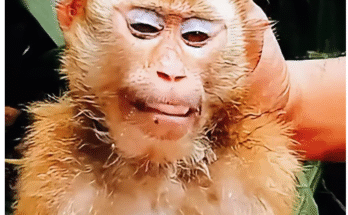In the shadow of concrete jungles, a haunting image repeats itself: a monkey writhing beneath a power line, singed by electricity, a victim not of nature but of human sprawl. This isn’t an isolated tragedy. It’s a symptom of a growing crisis—the clash between rapid urban development and the silent suffering of wildlife.
As our cities stretch further into once-untouched forests, animals like monkeys are left with shrinking habitats and impossible choices. Trees are replaced by power lines. Forest trails become traffic-laden roads. What remains for wildlife is a hostile, alien world where survival depends on adapting to man-made dangers.
The electrocuted monkey was simply navigating this harsh new reality—swinging from cables instead of branches, searching for food in garbage piles rather than fruit trees. In that instant of contact with a live wire, its world changed forever. The screams, the convulsions, the seared fur—these are more than signs of pain; they’re a desperate cry for change.
Urban infrastructure must evolve with compassion. That means insulating wires, redesigning transformers, building green corridors, and protecting the invisible pathways wildlife depends on. Animal rescue groups and local governments are already piloting such changes in parts of Asia and Africa. But isolated efforts aren’t enough.
Urban planning must factor in non-human lives. Until it does, the toll of progress will be paid not only in concrete and steel, but in scorched fur and broken wings. The next time we look up at a monkey clambering across wires, we must ask: is this the best we can do?



